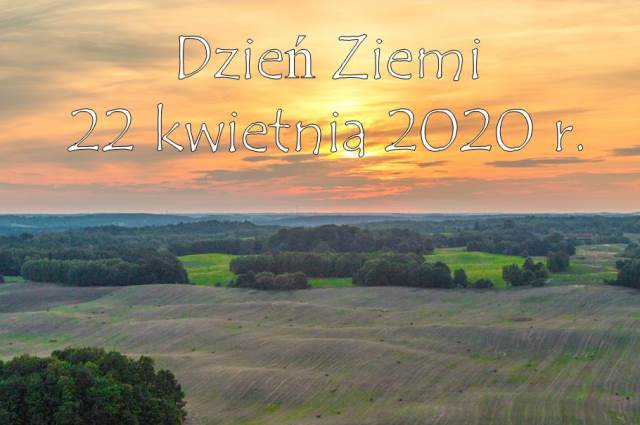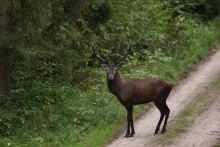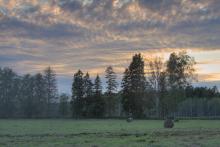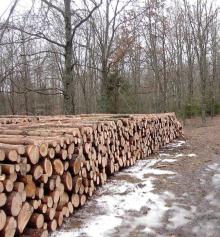 Asset Publisher
Asset Publisher
Polish forests
Poland is in the European lead, while concerning the area of all forests. They cover about 29,2 % of the country territory, and grow within the area of 9,1 million hectares. The overwhelming majority of the forests is state owned, of which almost 7,6 million hectares are managed by the State Forests National Forest Holding..
The number of Polish forest is still growing. The forestation rate of the country has increased from 21 % in 1945 to 29,2 % at the moment. Between 1995 and 2008, the forest area increased by 310 thousand ha. The basis for afforestation works is the "National Programme for Increasing the Forest Cover" (KPZL), assuming an increase of the forestation rate up to 30 % by 2020 and up to 33 % by 2050. Polish forests abound in flora, fauna and fungi. 65 % of the total number of animal species live there.
The forests grow in our country on poor soils, mainly because of the development of the agriculture in previous years. It influences the distribution of the types of the forest sites in Poland. Over 55 % of the forest areas is covered with coniferous forests. In other areas, there are forest sites, mainly the mixed ones. Their small part constitute alder and riparian forests – not more than 3 %.
In the years 1945 – 2011 the area of natural deciduous tree stands within the area of the State Forests National Forest Holding increased from 13 to 28,2 %.
Within the lowlands and uplands the most often occurring tee species is pine. It covers 64,3 % of the forest area of the State Forests National Forest Holding and 57,7 % of private and commune forests. In the mountains the predominant species is European spruce ( in the west) and European spruce with beech (in the east). Domination of pine is the result of carrying on sustainable forest management in the past. Once, the monocultures (crops or cultivations of one species) were the answer to the great demand of industry for wood. Such forests appeared to be quite fragile to climatic factors. They also were often the prey of pests' expansion.
In Polish forests, the share of other tree species, especially deciduous trees have been systematically increasing. The foresters have stepped aside from monocultures – that is why, they try to fit specific species of the forest stand to the natural stand, that would be proper for the given area. Thanks to that, in the years 1945 – 2011, the area of the deciduous tree stands within the lands of the State Forests National Forest Holding increased from 13 to 28,2 %. There occur more and more frequently the following tree species: oaks, ashes, maples, sycamore maples, elms, but also birches, beeches, alders, poplars, hornbeams, aspens, tilias and willows.
Our forests are the most often represented by the forest stands aged 40 to 80 years. The average age of the forest equals 60 years. More and more trees are of big size at the age over 80 years. Since the end of the Second World War, the forests' area has increased up to almost 1,85 million hectares.
Raport o stanie lasów w Polsce 2012
 Asset Publisher
Asset Publisher
Zrób coś dla Ziemi, zrób coś dla siebie!
Zrób coś dla Ziemi, zrób coś dla siebie!
Po raz pierwszy od 1970 r. nie mamy możliwości, by razem świętować z okazji Dnia Ziemi. To jednak doskonały czas, by zastanowić się nad tym, co każdy z nas, każdego dnia może zrobić, by za wszystko podziękować naszej planecie!
Worki, rękawiczki, miejsce na ognisko. Leśniczy lub edukator o poranku 22 kwietnia każdego roku miał już wszystko przygotowane. Gdy słońce na dobre królowało na niebie ogrzewając swoimi promieniami powietrze, grupy przedszkolaków, uczniów oraz dorosłych zmierzały do lasu lub innego bliskiego zielonego miejsca. Tego dnia każdy chciał zrobić coś dobrego dla Ziemi. Do najczęstszych form podziękowań należało zbieranie śmieci. Wśród innych wymienić można sadzenie drzew i krzewów, warsztaty, festyny, konferencje. Każdy edukator miał z pewnością inny patent na uczczenie tego niezwykłego święta. Wszystkie te pomysły miały jednak wspólne miano – kierowały uwagę odbiorcy na planetę, procesy na niej zachodzące oraz jej problemy.
Dziś obchody przeniosły się w wirtualny świat. Ministerstwo Środowiska przygotowało na tę okazję stronę internetową www.dzienziemiwmk.pl. Warto zajrzeć na profile nadleśnictw w mediach społecznościowych. Ten dzień nie przejdzie tam bez echa. Hasło tegorocznego Dnia Ziemi brzmi „Działania na rzecz ochrony klimatu”. Trudno się temu dziwić, skoro zmiany klimatu dostrzega dziś każdy. Wokół tego problemu powstało wiele teorii. Państwa samodzielnie oraz skupione w organizacje podejmują działania, które mają zahamować postępujące negatywne procesy.
A co tego dnia i każdego następnego może zrobić każdy z nas? Wydaje się, że jeden człowiek ma niewielki wpływ na otoczenie. Jednak jeśli każdy mieszkaniec choćby małej wsi zrobi coś dobrego, efekt dla tej konkretnej miejscowości z pewnością będzie widoczny
i odczuwalny. A co można zrobić? Wystarczy nie wyrzucać śmieci gdzie popadnie. Warto zacząć jej segregować. Swoją uwagę możemy skupić na tym, co kupujemy. Niektórych przedmiotów możemy użyć wielokrotnie, czasem w innym charakterze. Każdy z nas powinien też przemyśleć kwestię zużycia wody i prądu w swoim domu. Jest mnóstwo drobnych czynności, które wykonywane przez rzeszę osób, przyniosą pozytywne rezultaty. Dzisiejsze święto, obchodzone w szczególnych warunkach, daje nam szansę na refleksje nad naszym stylem życia w kontekście zmian klimatu. Warto się więc przemóc i wprowadzić we własne życie choć jedno w zaleceniach proekologicznych zachowań.


 fot. Paweł Fabijański
fot. Paweł Fabijański
 fot. Paweł Fabijański
fot. Paweł Fabijański
 fot. Paweł Fabijański
fot. Paweł Fabijański





